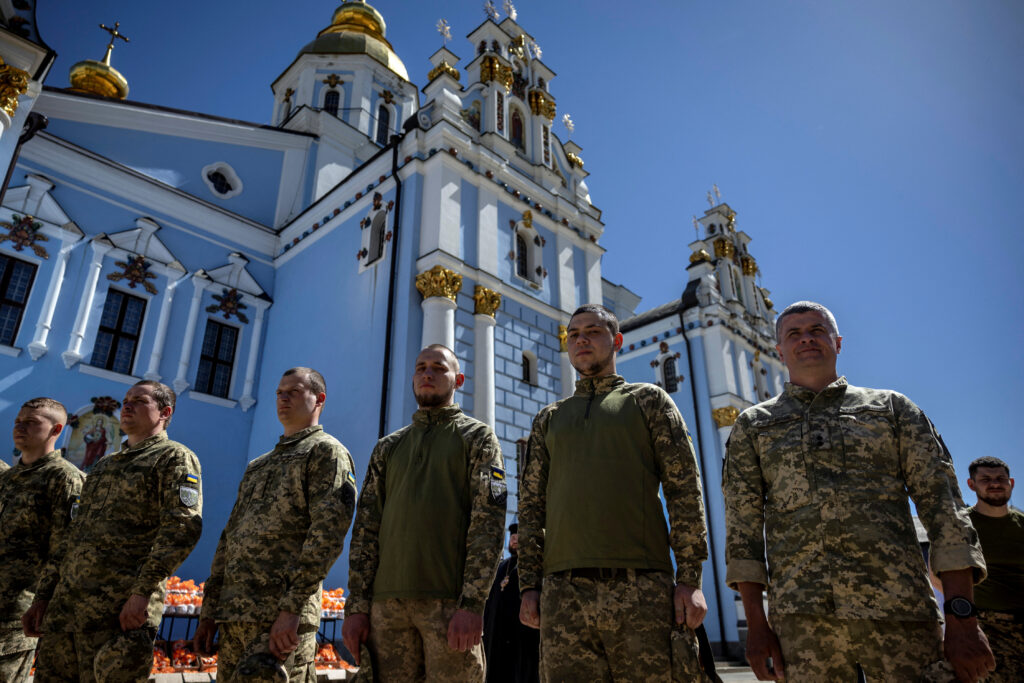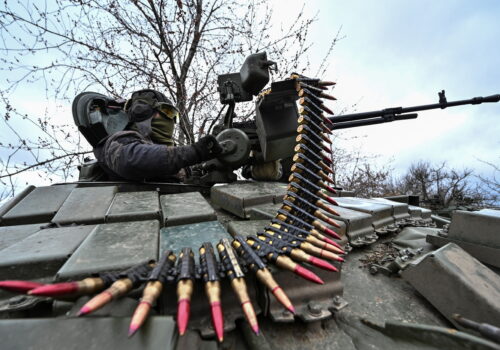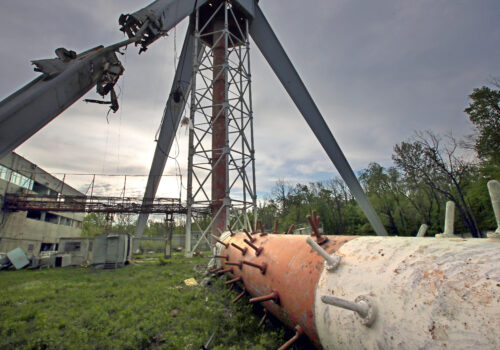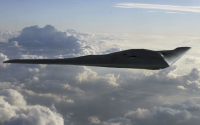
Ukraine’s new mobilization law leaves demobilization issue unresolved

Ukraine’s new mobilization law will come into force later this month as the country seeks to resolve mounting problems over wartime service in the Ukrainian military. Despite months of political debate and multiple revisions, many observers remain unconvinced by the version of the law that was finally approved by the Ukrainian Parliament and signed by President Zelenskyy on April 16. Crucially, it fails to address the topic of demobilization for the hundreds of thousands of Ukrainians who have been serving since the onset of the full-scale Russian invasion more than two years ago.
Ukraine’s new mobilization law is the latest step in ongoing efforts to reform the military recruitment process and meet the unprecedented challenges posed by Russia’s ongoing invasion. Although Ukrainian losses remain undisclosed, there is clearly a pressing need to replenish the ranks of the military, while also allowing current service personnel to be rotated out of front line positions or demobilized.
Ukrainian military officials initially stated that the goal of the new law was to mobilize an additional 500,000 people. This figure has since been reduced to an unspecified but significantly lower number. Prior to the full-scale invasion, around 250,000 people served in the Ukrainian military, but thanks in large part to a massive surge in volunteers following Russia’s invasion, this force swelled to around 880,000 troops. Together with the National Guard and other formations, there are now believed to be approximately one million Ukrainians in uniform.
Stay updated
As the world watches the Russian invasion of Ukraine unfold, UkraineAlert delivers the best Atlantic Council expert insight and analysis on Ukraine twice a week directly to your inbox.
Ukraine’s mobilization bill was subject to approximately 4500 amendments, underlining the complexity of the issue. The final version focused on regulating the process of identifying and registering potential conscripts, reviewing eligibility for mobilization, and revising penalties for evading service. Key points include the introduction of an online registry for recruits and the lowering of the age for draft eligibility from 27 to 25.
In line with the new regulations, men of military age will now be obliged to update their registration details within 60 days of the law entering into force, either at regional offices or via an online portal. They will be required to carry their military registration documents and present them upon request or when applying for a passport. Meanwhile, penalties for evading mobilization remain relatively mild. These include modest fines and the potential revocation of drivers licenses.
The new mobilization law does not extend to military-age females. Ukrainian President Volodymyr Zelenskyy had earlier stated his opposition to obligatory military service for women. While they are not subject to conscription, many Ukrainian women do choose to enlist in the armed forces voluntarily, with approximately 60,000 currently serving in a variety of positions including front line roles.
To further boost the mobilization process, the Ukrainian army plans to open a network of 27 new recruitment centers in the coming months in major cities across the country. These centers will function as advisory and information hubs, providing guidance to those interested in joining the armed forces and allowing candidates to choose which unit they prefer to serve in. The first recruitment centers have already opened in Lviv and Zaporizhzhia. Initial reports are positive and indicate this modern approach to military service could help address some of the key concerns among potential recruits.
Eurasia Center events

Most of the criticism leveled at Ukraine’s new mobilization law has focused on the removal of earlier provisions regarding demobilization. Initial drafts envisaged the demobilization of military personnel after 36 months of service, and the rotation of those serving on the front lines for over six months. However, these clauses were taken out of the legislation at the last minute following appeals from Ukraine’s military leadership, who argued that they would weaken Ukraine by facilitating the withdrawal of the country’s most experienced military personnel without providing sufficient trained replacements. The Ukrainian Ministry of Defense is now working on a separate law to handle the demobilization issue.
While opinion remains divided over the fairness and effectiveness of Ukraine’s new mobilization law, few would argue that the country urgently needs to address manpower issues within the armed forces. Many analysts cite troop shortages as one of main challenges facing the Ukrainian military, along with insufficient weapons and ammunition deliveries from the country’s Western partners.
Russia does not currently appear to be encountering any such problems. In recent weeks, Ukrainian commanders have reported that their forces are now outnumbered by as many as ten to one at certain points along the front lines of the war. This overwhelming superiority in numbers is enabling Russia to advance on the battlefield despite suffering consistently high casualty rates.
With Russia’s initial blitzkrieg invasion now transformed into a war of attrition, the Kremlin aims to avoid a politically risky second wave of mobilization and maintain a steady stream of volunteers by offering a range of cash incentives for new recruits, including extremely high salaries and generous financial support for the families of servicemen. Recent reports indicate Russia is aiming to sign up hundreds of thousands of additional troops in the near future amid preparations for a major summer offensive.
Ukraine is now racing against the clock to strengthen its military before Russia’s summer offensive can get fully underway. The recent breakthrough in Washington DC regarding desperately needed US military aid will boost these efforts, as will the new mobilization law. However, with no end in sight to Russian aggression, Ukraine must also find long-term solutions to the country’s lack of new recruits and the thorny issue of demobilization.
Dr. Elena Davlikanova is a Democracy Fellow at the Center for European Policy Analysis and an associate professor at Sumy State University in Ukraine. Kateryna Odarchenko is a partner at SIC Group Ukraine.
Further reading
The views expressed in UkraineAlert are solely those of the authors and do not necessarily reflect the views of the Atlantic Council, its staff, or its supporters.

The Eurasia Center’s mission is to enhance transatlantic cooperation in promoting stability, democratic values and prosperity in Eurasia, from Eastern Europe and Turkey in the West to the Caucasus, Russia and Central Asia in the East.
Follow us on social media
and support our work
Image: Ukrainian soldiers attend an Orthodox service before delivering Easter cakes to fellow servicemen at the front for Orthodox Easter, amid Russia’s attack on Ukraine, during a ceremony at St Michael’s Cathedral in Kyiv, Ukraine. May 2, 2024. (REUTERS/Thomas Peter)




